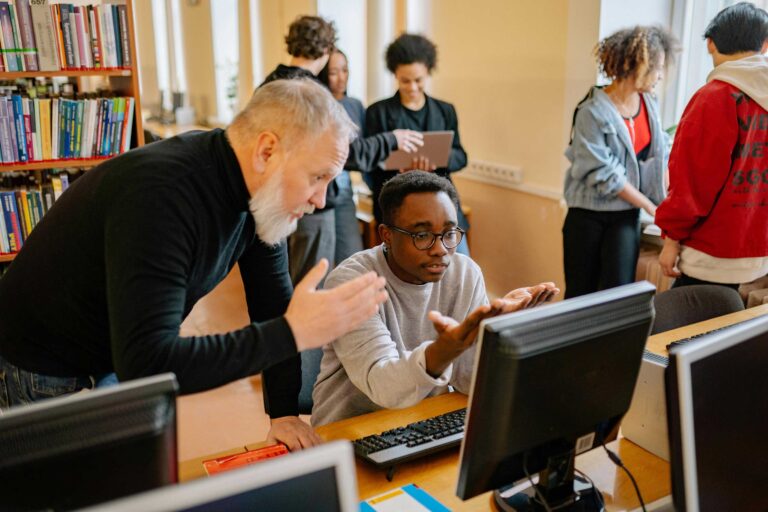Adolescence is supposed to be a time of carefree exploration of the world around us. In a perfect reality, teenagers should be worried about extracurriculars and college applications. Unfortunately, the environment our teenagers have inherited is plagued by constant technological distractions and premature exposure to mature subject matter. With relentless divisions and suffering seemingly unavoidable, it’s no wonder many teens are experiencing significant mental health challenges and, subsequently, substance abuse as a means of self-medication. In fact, more than 1.5 million youth in the U.S. reported a substance use disorder just in the past year.
My story
We could mull over my adverse childhood experiences and how, like many other young people, they contributed to my developing substance use disorder. But I’m more concerned with what I didn’t experience and how that shaped who I am today. I ended up abusing prescription drugs and being admitted to a residential drug abuse treatment center at 17 years old. After 11 months of isolation from reality, I returned to a world that no longer made sense. I didn’t feel like a teenager anymore and had virtually nothing in common with the strangers I’d once called friends. While my classmates were shopping for prom dresses and filling out college applications, I was sitting in church basements with people twice my age discussing our ideas of a higher power and how we managed to avoid getting high that day.
Despite feeling like an alien, I maintained my sobriety with the help of a strong recovery community in my area. But that is not always the case for many young people with mental health challenges. When resources that foster peer-to-peer connections are scarce and not easily accessible, young people must try to fit into a system that caters to only young children or adults. Programs focusing on youth navigating this critical time of self-discovery and coming of age are few and far between.
My work
My lived experience has benefitted my current work of researching these rare programs and identifying models that are effective for young people experiencing mental health challenges. Although peer support is not a new concept in adult mental health treatment, the idea and use of youth peer support is a foreign concept across the board. Many of the youth programs that exist today tend to be restrictive or operate with antiquated models that result in a more clinical atmosphere. This often leads to young people feeling confined by or unable to relate to a program structure that simply was not made for them. We must highlight youth-led organizations that elevate youth voices and put peer-to-peer connections at center stage. Programs that use formal and informal peer services will ensure our young people are adequately prepared to succeed and offer respite for this population underrepresented in mental health services.
Throughout my recovery, having few opportunities to interact with other young people caused me to face numerous “either/or” situations: I could focus on fostering relationships with the older, more experienced people in recovery, or I could choose to interact with people my age who were navigating the typical stages of adolescence without the experience of substance use or other mental health challenges. There were no established spaces that allowed those realms to intersect for young people. For instance, the premise of planning for my future was often contradicted by the recovery mantra of living “just for today” and left me overwhelmed and ill-prepared. When my classmates were discussing their ideas to change the world and make a difference, I felt constrained by my identity as a recovering addict because I rarely saw other people like me who were successfully navigating these spaces. It would be years before I learned that my experiences with mental health gave me a unique perspective and skill set to inspire hope and effect change.
The following present-day youth-focused programs could have positively impacted my recovery journey.
1. Hope Academy High School
High school can be a nightmarish experience for teens regardless of mental health challenges. Facilities dedicated to the academic and recovery needs of a student with substance use disorder almost seem like a fairytale for 17-year-old me. Returning to an environment full of people who understand the gravity of substance abuse and how it encompasses nearly every aspect of a person’s life can be extremely helpful. Institutions like Hope Academy High School in Indianapolis, Indiana, provide a standard curriculum under the umbrella of substance use recovery with a significant emphasis on peer support. This model ensures students receive a proper education and the necessary life skills for a young person navigating recovery. Hope Academy offers family therapy, after-school events, and hangouts that allow students to maintain an atmosphere of recovery outside their typical eight-hour school day. Attending a school like this might have lessened my feelings of shame and isolation by being close to peers already adjusting to our new way of life.
2. My Future is EPIC
My Future is EPIC follows a strengths-based, peer-led model focusing on goal-setting, life-planning, and self-advocacy for teens with substance use disorder. By emphasizing life planning, the program can address an area of concern for many teens, with and without substance use disorder, by identifying plausible, attainable goals and steps to achieve them. This component is crucial for young people who often struggle with conceptualizing their futures — especially since this is typically a pivotal stage for life planning and figuring out their identity. Education, employment, and healthy relationships are just a few areas addressed in this program’s model to help teens map out their future with the greatest chance for success. In addition to youth being program facilitators, My Future is EPIC relies heavily on youth peer-to-peer group sessions, allowing teens to connect with others on similar paths and see that these seemingly impossible life plans are achievable.
3. Lead A Change Project
Another game-changing program that recognizes the unparalleled value of peer support is the Lead A Change Project, created by the Building Audacity organization. This project teaches young people ages 11–25 the basics of community organizing and implementation. Participants learn from their peers the vital processes of community building and program development, how to effectively communicate with local leaders, and get the chance to effect change in their communities. Building Audacity understands that involving youth voices in youth program development is crucial for them to be effective. By allowing youth to play pivotal roles in their future, programs like this are fostering a generation of people who can recognize a problem and bring about actual solutions for the betterment of themselves and their peers.
Despite not having access to programs like these, I found a way to forge my path in the world of youth in recovery through advocacy and public speaking. But my journey might have been easier with access to peer programs. What began as a simple attempt at showing the world that young people also struggle blossomed into developing a platform that has allowed me to share my experience with others struggling with isolation, stigma, and feeling disadvantaged. I am encouraged by these programs that incorporate youth voices when seeking solutions to a system filled with gaps and disparity. By elevating the youth perspective and promoting formal and informal youth peer services, we can improve youth mental health care and implement preventive measures earlier in life.


